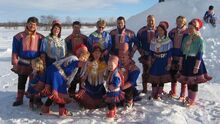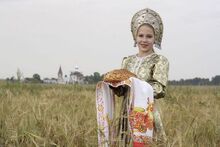
The Shinto people are native peoples of the Planet Gaban. These people are cold blooded and can adapt to all tempatures but prefer to live in such frigid places shuch as St. Bishop. The Shinto people were thought to have been created in the area of St. Bishop. Legend has it that the first Shinto person was born out of one of the volcanoes and because of this the Shinto people like to build there homes and buildings near Volcanoes and the ocean. There are many subgroups of the Shinto people, they include Batese, Athenians, Ewoks, Wookies, Seminole, Chickasaw, Oshkosh, and Navii just to name a few. There have been many kingdoms, republics, and empires built across the planet by the Shinto people. But they have always been united with one another and eventually became united into One nation under a Empire named the United Kingdom of Russia, Athens, Puerto Rico, and Snelly. Regardless of the region where they lie, all Shinto people are genetically related, share the same skin tone, religion, and most of the time dress. Although dress is different depending on the regions that they live, Shinto people almost all wear the same type of clothing.
History[]
To understand the origins of the Shinto people one must read and understand the story of Creation. It is said that the Godess Athena made a perfect model of herself in the Shinto people. She made them from the sea and the heat of the volcano in St. Bishop. Here they lived for many thousands of years until Athena told them in the Act's of Defiance, that they should spread across the world and search for new homes. These people are the only people who can survive the extreme tempatures of the planet of Gaban. They have lived all over the eastern portions of the Planet and the far north which experiences tempatures that can reach -480 degrees. Since then many Shinto have formed different tribes, sects, and important civilizations all across the planet. Since 1 A.U.K., all Shinto people have become one single nation known as the United Kingdom of Russia, Athens,Puerto Rico, and Snelly.
Anatomy[]

Shinto peoples where given the ability to swim in the oceans and rivers as they can change their anatomy at will to allow underwater breathing and create fins. A great portion of the Shinto population lives within the confines of the Kingdom of Snelly which if measured would be the worlds largest kingdom due to it claiming all the worlds oceans as it's territory. Shinto men and women tend to be the same height, averaging about 17,389 Secrates for men and 17,280 Secrates for women. Shinto peoples have two hearts. If one dies out or is cut in battle, the other will be able to continue operating. Many wealthy members of soceity opt out of having two hearts and often have surgery to remove one over the other. Shinto people have two lungs which help breathe. They have thin membranes on their necks which allow them to create gills to breathe under water. The reproductive parts of the bodies are seperate for men and women.
Reproduction[]

Unlike the other Gabanian inhabitants the Gainese Culture, the Shinto people can only ever produce one child every gestation cycle. They do not lay eggs and rather the female has a womb where she carries a child for up to 879 days on average or roughly 23-24 months. A Shinto woman averagely gives birth to one child but twins and often times triplets can occur. Anything above five children, even in itself is very very rare. No more than 9 children has ever been recorded. A Shinto baby will have roughly 1,200 Chromosomes or 600 from each parent. There are a total of 67,489,467,478,367 Genetic DNA Base Pairs in the Shinto peoples Genome. Shinto Men and Women mate for life and unlike the Gainese do not practice Polygamy. Often when a spouse dies, the widow, or widower will not remarry and often as a result remain lonely for the rest of their life. Many often die from a broken heart. Although it is the offsprings job to take care of their parent when they reach that age. As a consequence of bipedalism, Shinto females have narrower birth canals. The construction of the Shinto pelvis differs from other primates, as do the toes. A trade-off for these advantages of the modern human pelvis is that childbirth is more difficult and dangerous than in most mammals, especially given the larger head size of Shinto babies compared to other primates. This means that Shinto babies must turn around as they pass through the birth canal, which other primates do not do, and it makes Shinto the only species where females usually require help from their Conspecifics (other members of their own species) to reduce the risks of birthing. As a partial evolutionary solution, Shinto fetuses are born less developed and more vulnerable. Gainese babies are cognitively more developed than Shinto babies until the age of six months, when the rapid development of Shinto brains surpasses Gainese. Another difference between women and Gainese females is that women go through the menopause and become infertile decades before the end of their lives. All species of non-human apes are capable of giving birth until death. Menopause probably developed as it has provided an evolutionary advantage (more caring time) to young relatives.

Art[]
The Shinto are very artistic people. They enjoy pottery, painting, singing, acting, and dancing. Oral story telling is one of the oldest forms of art in the history of the Shinto People.
Religion[]
The Shinto believe in the Athenian Religion and believe that the Godess Athena is their one and greatest deity. The Shinto people have thousands of God's and Goddesses. Shinto people pray a total of nine times a day. Most worship at home as they are not expected to be able to make it to their temples every day or time of prayer. However a call to prayer is rung by Bells, Gongs, and Drums 9 times a day. These Bells, Gongs, and Drums beat to a different tune then the 72 other times they ring giving the 72 hour time of the day. The Shinto people regard The Big Book of Ancient Gabanian Fables as their one true book of worship. Although religious law has loosened the ability of copies of the book to be written on the internet and published by temples in mass produced prints, it is still widely practiced that all priest write a handwritten copy of the work.

Diet[]
The Diets of the Shinto People are a complex diet of meats, fruits, and vegtables. Their national Food is Pizza, Godzilla Whales, and Bantha Meat. The Men in the Northern Shinto Tribes hunt for the Whales and Bantha. Although the majority of Shinto people follow Koshem, most Shinto people who live in the north eat meat as no plants can grow in the harsh enviroment

Genetics[]
The Shinto people are possibly one of the most genetically diverse species on the planet of Gaban. The Shinto range from being pale furless inhabitants, to darker skins in regions with intense heat and sunlight to protect from burning, to furs in regions of extreme cold or to act like camouflage. Thus many shinto people live across the planet. How ever the great majority of Shinto people are very pale in nature and thus cover their bodies from head to toe to prevent exposure to the intense sunlight which can prove to be fatal. They are all shinto in nature but diverse in language, appearance, and ethnicity. Many of these people are Athenian Culture, Krygyst People, Ewok People, Wookie People, Chickasaw, Navi People, Na'Vi, Molvanian Peoples and Russian People just to name a few.
Langauge[]
All Shinto people speak Athenian(Language) as a first or second language as it is the Language of the Gods. There are many dialects of the language and many regional languages. The largest of which is Russian Language, Molvanian Lanuage, and the Krygyst(Language). As a whole all the peoples of the United Kingdom of Russia, Athens, and Puerto Rico attend school using Athenian as their main language.
Dress[]
Shinto people tend to wear clothing that adheres to strict Koshem Laws on how it is made as they are very religious people. Nudity is common place and widely accepted as all Shinto Peoples enter the world naked. There are no laws prohibiting dress besides those of Koshem. Conservative clothing is mandatory if one wears clothing.